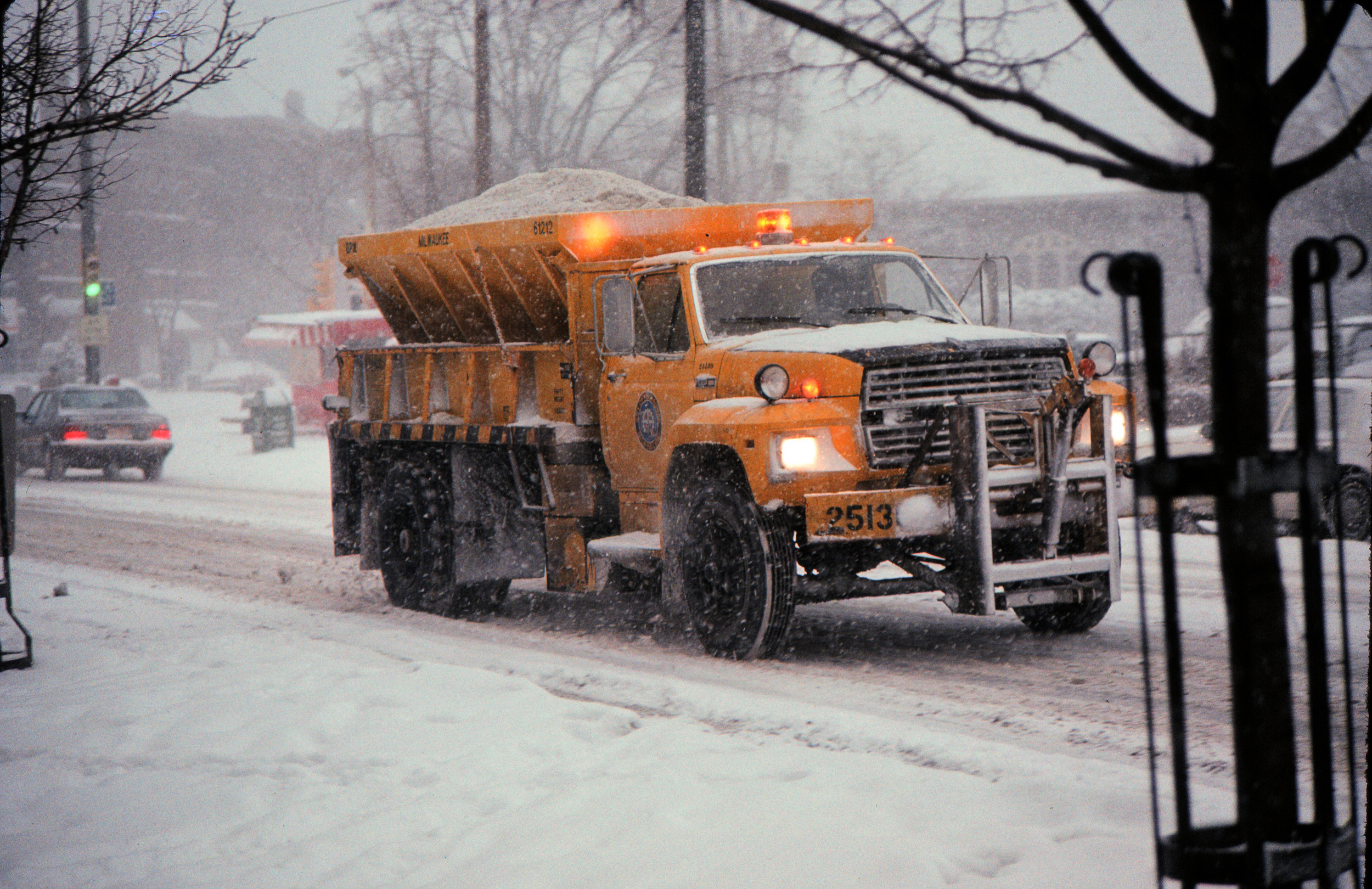The Department of Public Works is one of the largest administrative divisions of Milwaukee’s city government, but this was not always so. Even after the city incorporated in 1846, officials only gradually expanded government services to meet the needs of citizens. By 1871, the city had no water works, few paved streets, and a very rudimentary sewer system.[1] As Milwaukee grew into a major industrial hub in the late nineteenth century, government agencies and services steadily expanded, most notably the Board of Public Works. Created in 1869, this agency first focused on the most significant crisis at hand: the need for clean water and proper sanitation.[2] Work began on the city’s sewers and water mains, but the increase in taxes fueled citizen resentment, forcing city officials to rely on bond sales to fund city improvements.[3] As Milwaukee entered the twentieth century the Socialist Party rose to power, capturing council seats and eventually the mayor’s office. Socialists, working with Progressives of both parties, increased government services in a number of ways that protected the city’s immigrant and working-class populations. Their investment in the city’s infrastructure, parks, public spaces, water system, and housing met resident demands and resulted in electoral success that continued for decades.[4] The Socialists campaigned on the issue of government efficiency. Once in power they reorganized municipal agencies, taking more responsibilities from the Department of Health and giving them to the Department of Public Works.[5] For the next fifty years, a number of growing American cities modeled their municipal government on Milwaukee.[6]
Today the Department of Public Works consists of four major divisions: Administrative Services, Infrastructure Services, Operations, and Water Works. Administrative Services are responsible for coordinating city transportation, environmental projects, special events, parking, public relations, and budget management. Infrastructure Services maintain city bridges, roads, alleys, sidewalks, sewers, and oversees traffic control and public lighting. The Operations division handles the day-to-day needs of the city, collecting and removing waste, recycling, snow and ice control, and landscaping. The Water Works administers the maintenance of water facilities, water infrastructure, and water quality.[7] In the 2016 budget, the Department accounted for one-fifth of the city’s anticipated expenditures.[8]
Footnotes [+]
- ^ Laurence Marcellus Larson, “A Financial and Administrative History of Milwaukee,” Economics and Political Science Series 4, no. 2 (Madison, WI: Bulletin of the University of Wisconsin, 1908), 268.
- ^ Kate Foss-Mollan, Hard Water: Politics and Water Supply in Milwaukee, 1870-1995 (West Lafayette, IN: Purdue University Press, 2001), 47.
- ^ Foss-Mollan, Hard Water, 268.
- ^ Eric Fure-Slocum, Contesting the Postwar City: Working-Class and Growth Politics in 1940s Milwaukee (New York, NY: Cambridge University Press, 2013), 53-55. This was particularly true of Daniel Hoan, a Socialist who served the city of Milwaukee as mayor from 1916 until 1940.
- ^ Judith W. Leavitt, The Healthiest City: Milwaukee and the Politics of Health Reform (Madison, WI: University of Wisconsin Press, 1982), 266-267.
- ^ John Gurda, Milwaukee: The Making of Milwaukee (Milwaukee: Milwaukee County Historical Society, 1999), 271-273.
- ^ Department of Public Works, Official Website of the City of Milwaukee, accessed December 20, 2015.
- ^ “2016 Budget, City of Milwaukee,” City of Milwaukee website, accessed December 20, 2015. The Department of Public Works projected $125,676,658 for operating costs for the fiscal year 2016. The city budget totaled $615,568,884.
For Further Reading
Foss-Mollan, Kate. Hard Water: Politics and Water Supply in Milwaukee, 1870-1995. West Lafayette, IN: Purdue University Press, 2001.
Leavitt, Judith W. The Healthiest City: Milwaukee and the Politics of Health Reform. Madison, WI: University of Wisconsin Press, 1982.


0 Comments
Please keep your community civil. All comments must follow the Encyclopedia of Milwaukee Community rules and terms of use, and will be moderated prior to posting. Encyclopedia of Milwaukee reserves the right to use the comments we receive, in whole or in part, and to use the commenter's name and location, in any medium. See also the Copyright, Privacy, and Terms & Conditions.
Have a suggestion for a new topic? Please use the Site Contact Form.